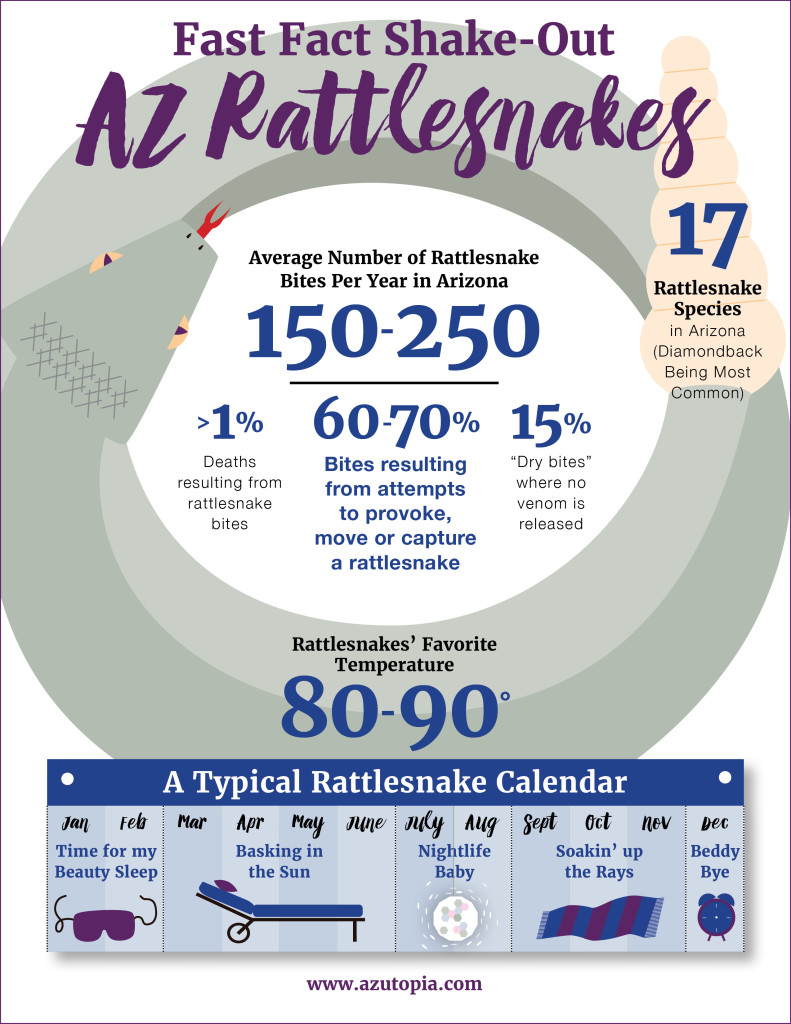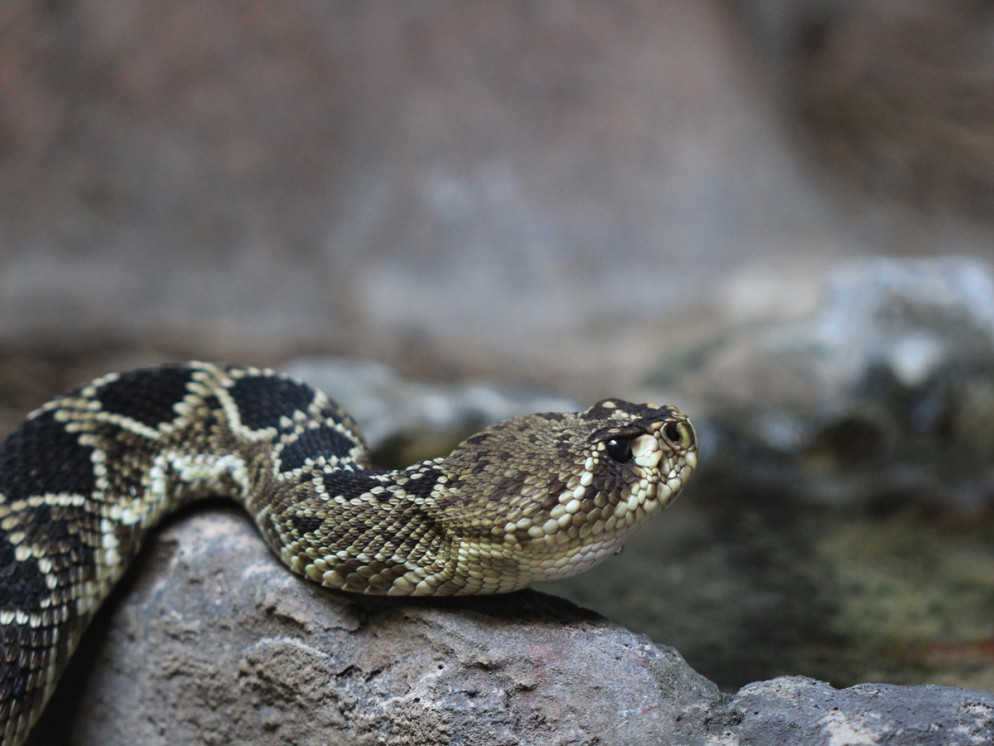This easy-to-follow guide covers the myths and truths about rattlesnakes in Arizona. Including solid information about chances of running into them, what to do if you do come across one, dealing with a bite, and more.
 Myths & Truths about Rattlesnakes in Arizona
Myths & Truths about Rattlesnakes in Arizona
MYTH: Arizona is covered in rattlesnakes.
TRUTH: Rattlesnakes do live in Arizona. However, they are spread out over a wide territory, preferring quiet spots, far from humans, whenever possible.
MYTH: If I hike in Arizona I will encounter a rattlesnake.
TRUTH: Hundreds of thousands of people enjoy hiking in Arizona every year without ever encountering a snake of any kind. However, because the possibility does exist, it is important to always hike smart*.
MYTH: Hikers should feel free to absentmindedly run down trails, walk through tall grass, and grab onto high ledges before looking.
TRUTH: Hikers should always *hike smart and be aware of their surroundings. Look closely before entering any crevices or grabbing onto high ledges. If you leave a trail to hike through tall grass or leaves, use a hiking pole or long stick to check the areas around you.
MYTH: Rattlesnakes are crazy active all year.
TRUTH: Snakes are big fans of clear skies, sunshine and 80-90° temperatures. They are most active in Spring and Fall, hibernate in Winter and move into shaded nitches or leaves to escape Summer’s blazing sun.
MYTH: I’ll hear a rattlesnake if I get near it.
TRUTH: A rattler will sound its alarm when threatened. However, if it’s groggy from too much sun, cold or hibernation (or simply doesn’t hear you coming) it may not make a sound.
MYTH: If I encounter a rattler, I should move it.
TRUTH: Don’t ever try to move a snake! The vast majority of bites occur when people attempt to move or provoke a snake. If you encounter a rattler move away, wait for it to exit, or provide a ten-foot girth and walk slowly around it.
MYTH: Rattlesnake bites are fatal.
TRUTH: Less than 1% of people bitten by a rattler die. However, a rattlesnake bite is very serious and requires professional treatment as quickly as possible.
MYTH: If bitten by a rattler, I should go all Indiana Jones and slice the wound, suck out the poison, create a tourniquet and self-treat the bite.
TRUTH: Leave the bite alone. Self-treating often leads to more damage. Try to keep the bitten area elevated, remove any constricting jewelry or clothing in the area, call 911, keep still or (if needed) move slowly to find help. Get to a treatment facility as quickly as possible. Expect severe pain and swelling.
MYTH: My dog will scare off a rattler.
TRUTH: Dogs are susceptible to rattlesnake bites too, and don’t always recognize the danger. Keep your dog on a leash and, if you take them hiking with you often, consider rattlesnake avoidance training them. (Rattlesnake Avoidance Training: Phoenix/Partners Dog School, Tucson/Arizona Rattlesnake Avoidance, Prescott/BK Birddogs)
Other Resources: Arizona Poison and Drug Information Center, Arizona Leisure, About Travel






11 Responses to The Truth about Rattlesnakes in Arizona
I have read a recommendation to carry a marker with you. If bitten write the time of the bite and circle the swollen area ariound the bite so the emergency care people can see how much it changes by the time you get treatment.
Thanks for that information Betsy. I haven’t heard of this previously. It makes sense.
While hiking n riding I have seen many snakes crossing the trails.. ..I always say adult walks in front never children. Snakes are out right now from what I have told by someone that saw it..
Thank you Karen. That is a great rule for hiking with kids always. But especially when the temperatures are between 80 and 90, and snakes tend to be more active.
You forgot the part to always kill them if you can do so safely.
Arizona’s wild areas are rattlesnake’s home territory. We are in their space. Our recommendation is to respect their space and let them go their own way.
Can you kill them and Cook them. They taste like Chicken and their Skins make Beautiful Belts and Hat Bands.
LOL. I don’t know what the regulations are around this. But I don’t think I’d personally want to mess with one.
This site is deeply appreciated. I am about to launch my hiking business and there are currently no snake prevention and wildlife training for humans.
All snakes in their natural habitat are very important to the ecosystem, and they help keep the balance of nature. Your best bet is to leave them alone. if you happen to be in their environment they want to avoid you just as much as you want to avoid them. It is a mutual respect. and that is the way life is supposed to be lived
100%